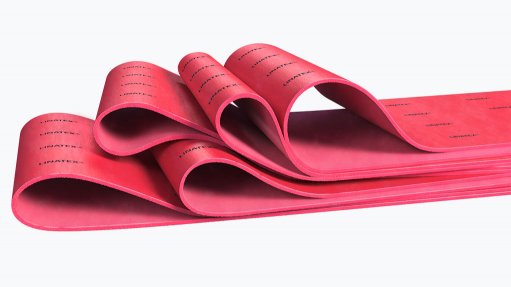SA entering a very scary socioeconomic corner
Despite the concerns of Finance Minister Tito Mboweni, South Africa’s 2019 Budget saw a real-term increase in government spending. Gross national debt will increase to about 60% in financial year 2023/24 – a proportion that, apparently, excludes debt guarantees and other ‘contingent liabilities’ that the State is responsible for. Already, the servicing of debt is the number three spending item in the Budget, coming to R209.4-billion. Increases in taxes and levies will directly hit the productive economy and serve to further constrain economic growth.
The economic growth rate is woefully inadequate (it came to 1.4% in the last quarter of last year). The unemployment rate in the fourth quarter of 2018 was 27.1%. According to the South African Social Security Agency, 17 731 402 South Africans received social grants in December 2018. But, according to Statistics South Africa, the number of South Africans with formal jobs during the last quarter of last year was 16.5-million. Registered taxpayers totalled only 7.6-million. According to the Institute of Race Relations, the number of social welfare recipients has exceeded the number of formally employed South Africans since 2016. From 2001 to 2016, the number of social welfare grant recipients rocketed by 328%, while the number of those formally employed rose by just 24%. In its 2019 Budget report, the National Treasury reported that social grant coverage was increasing at some 2% a year, while spending on social grants would increase from R162.6-billion in 2018/19 to R202.9-billion in 2021/22, equating to average yearly growth of 7.6%. This is unsustainable.
Yet we persist with a hopelessly obsolete economic development model, with the economy dominated in key sectors by State-owned monopolies, most of which are very inefficient and riddled with corruption. The economy is still firmly planted in the mid-20th century, despite the fact we are nearly at the end of the second decade of the 21st century! Government calls this museum-piece model the ‘Developmental State’. Given the havoc it has wrought on the economy, it would be better described as the ‘Anti-Developmental State’ – but it has been a brilliant success in facilitating political patronage, crony capitalism and corruption.
But this situation is not unprecedented. Back in the mid-20th century (roughly, from the late 1950s to the early 1970s, depending on the country concerned) a number of South American countries found themselves in the same trap. Of course, there are many differences between those countries then and South Africa today – for one, the South African economy today is much more sophisticated than, say, the Argentinian and Uruguayan economies were some 60 years ago, although Argentina had developed a quite sophisticated industrial sector; for another, high import tariff barriers were common in those days.
But the similarities are enough to be concerning. Under the rule of President Juan Perón (1946–1955), who created Argentina’s since-dominant Peronist movement, “the State bureaucracy served a vast array of government monopolies and nationalised industries, which consumed huge amounts of public money and remained geared politically to satisfying urban interests regardless of the nation’s overall economic performance. In effect, Perón had converted the State into a machine for producing Budget deficits, trade imbalances and chronic inflation”. (Edwin Williamson The Penguin History of Latin America, Penguin, 1992, p 471.) The consequence was a combination economic crisis causing financial crisis causing political crisis and Perón was overthrown by the military in 1955. Subsequent democratic governments failed to address these problems because they required measures that were just too unpopular. The ultimate result was the overthrow of democracy and the creation of a military dictatorship in 1966. (The military also failed and the 1966 coup only initiated a period of instability and violence, which a democratic interlude – under Perón again (1973 to 1974), and then his widow, Isabel (1974 to 1976) – failed to end, leading to another military coup and a most brutal dictatorship, which was ended only by Argentina’s defeat in the 1982 Falklands War. As is well known, the Argentine economy has never fully recovered, although the country has now been a stable democracy for 36 years.)
Uruguay set up the first welfare State in the whole of the Americas, enshrined in its 1919 constitution (drawn up in 1917). Again, the State became heavily involved in the economy. Again, there were major publicly owned monopolies occupying key sectors of the economy, such as electricity, railways and telecommunications. Again, a large public-sector bureaucracy developed, which, of course, consumed wealth, and did not create it. The system became inflexible, unable to adapt to changing global economic conditions. With an economy in decline (between 1955 and 1970, the country’s gross national product declined by 16%), the social welfare system became a grave burden on the economy. A lack of jobs for increasing numbers of university graduates, and very high university drop out rates (perhaps as high as 72% by 1968) led to political radicalisation, and, in 1968, the revolutionary group National Liberation Front – Tupamaros began its campaign of violence. It is very important to note that Uruguay was an impeccably democratic State when the Tupamaros started their campaign, and had been since 1903. Unable to combat the Tupamaros, the democratic State effectively collapsed in 1972, handing real power over to the military. The Tupamaros were crushed within a year, but Uruguay, like Argentina, found itself under a brutal military regime. Democracy was only restored in 1985.
To reiterate, there are many differences between Argentina and Uruguay on the one hand, and South Africa on the other. But the similarities in socioeconomic conditions are sufficiently numerous to be concerning. An overburdened, lethargic economy unable to respond to a changing world, an inefficient public sector that is a brake on economic growth, an excessively large public sector that consumes but does not produce, a welfare system dangerously close to becoming unaffordable – this is South Africa today. But the country has not yet fallen as far as Argentina and Uruguay (and other countries during the same period) had in the 1960s. This suggests that President Cyril Ramaphosa still has a chance of pulling the country up; but it also suggests he is the ruling African National Congress’s last chance to do so.
Article Enquiry
Email Article
Save Article
Feedback
To advertise email advertising@creamermedia.co.za or click here
Comments
Announcements
What's On
Subscribe to improve your user experience...
Option 1 (equivalent of R125 a month):
Receive a weekly copy of Creamer Media's Engineering News & Mining Weekly magazine
(print copy for those in South Africa and e-magazine for those outside of South Africa)
Receive daily email newsletters
Access to full search results
Access archive of magazine back copies
Access to Projects in Progress
Access to ONE Research Report of your choice in PDF format
Option 2 (equivalent of R375 a month):
All benefits from Option 1
PLUS
Access to Creamer Media's Research Channel Africa for ALL Research Reports, in PDF format, on various industrial and mining sectors
including Electricity; Water; Energy Transition; Hydrogen; Roads, Rail and Ports; Coal; Gold; Platinum; Battery Metals; etc.
Already a subscriber?
Forgotten your password?
Receive weekly copy of Creamer Media's Engineering News & Mining Weekly magazine (print copy for those in South Africa and e-magazine for those outside of South Africa)
➕
Recieve daily email newsletters
➕
Access to full search results
➕
Access archive of magazine back copies
➕
Access to Projects in Progress
➕
Access to ONE Research Report of your choice in PDF format
RESEARCH CHANNEL AFRICA
R4500 (equivalent of R375 a month)
SUBSCRIBEAll benefits from Option 1
➕
Access to Creamer Media's Research Channel Africa for ALL Research Reports on various industrial and mining sectors, in PDF format, including on:
Electricity
➕
Water
➕
Energy Transition
➕
Hydrogen
➕
Roads, Rail and Ports
➕
Coal
➕
Gold
➕
Platinum
➕
Battery Metals
➕
etc.
Receive all benefits from Option 1 or Option 2 delivered to numerous people at your company
➕
Multiple User names and Passwords for simultaneous log-ins
➕
Intranet integration access to all in your organisation

















